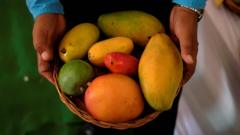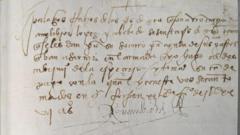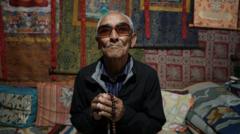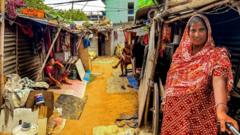As a dazzling array of jewels associated with the Buddha's mortal remains prepares to go under the hammer at Sotheby’s Hong Kong, the auction raises pressing ethical questions regarding the commodification of significant cultural artifacts.
Buddha-Linked Jewels Set for Controversial Auction at Sotheby’s
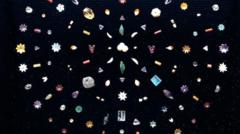
Buddha-Linked Jewels Set for Controversial Auction at Sotheby’s
A remarkable collection of jewels tied to the Buddha's remains is set to be auctioned, igniting ethical concerns surrounding cultural heritage.
On Wednesday, a stunning collection of jewels, which includes around 1,800 pearls, sapphires, rubies, and gold sheets, is scheduled to be auctioned at Sotheby's in Hong Kong, following over a century of relative obscurity in a private British collection. This cache was unearthed from a stupa in Piprahwa, northern India, back in 1898, and it has long been considered one of the most significant archaeological discoveries of the modern age, especially with relics closely associated with the Buddha himself found alongside the gems.
Nicolas Chow, the chairman of Sotheby's Asia, has praised the find as "among the most extraordinary archaeological discoveries of all time." However, as the relics prepare for auction, cultural experts express deep concerns about the ethics behind selling items of such profound significance to India's heritage. "Can the sale of treasures so intimately woven into India's sacred past be deemed acceptable?" questions Delhi-based art historian Naman Ahuja. He furthers the debate by questioning the validity of the 'custodian' status under which the current owners operate.
The jewels reached the Peppé family as a result of William Claxton Peppé, an English estate manager, who excavated the site near the Buddha's birth, revealing historical relics believed to belong to the Buddha's Sakya clan. Though the family purportedly considered donating the artifacts, Chris Peppé, the great-grandson of William, stated that logistical challenges led them to opt for auctioning as the most transparent means to transfer responsibility for these sacred items.
Prominent scholars continue to voice opposition. Ashley Thompson and curator Conan Cheong challenged the ethical implications of selling human remains alongside gems, pointing out the intrinsic connection between relics and the Buddha for many practitioners. Recent statements from Buddhist leaders, such as Amal Abeyawardene of the British MahaBodhi Society, underscore the stance that the Buddha's relics should be preserved for future veneration rather than sold for profit.
Chris Peppé acknowledged the complex legacy of his ancestor's excavation amid colonial influences, stating that the auction aims to honor the cultural significance of the relics, which include not only decorative jewels but elements of the Buddha's physical history. He emphasizes that previous attempts to donate the jewels were fraught with bureaucratic challenges.
As the auction date approaches, tension escalates, reflecting a broader discourse about cultural ownership, historical claims, and the respect due to sacred artifacts in an increasingly globalized market. The implications for how societies value their heritage and reconcile past injustices linger in the background, challenging the very notions of custodianship and commerce intertwined with these historically rich relics.

